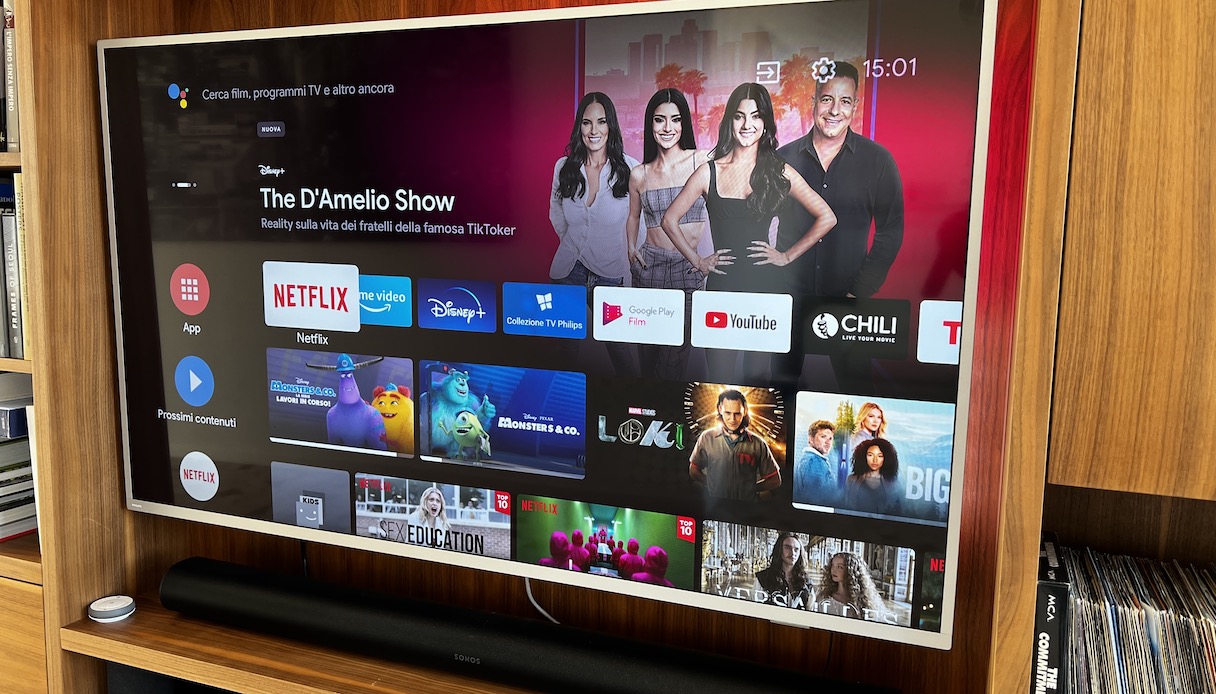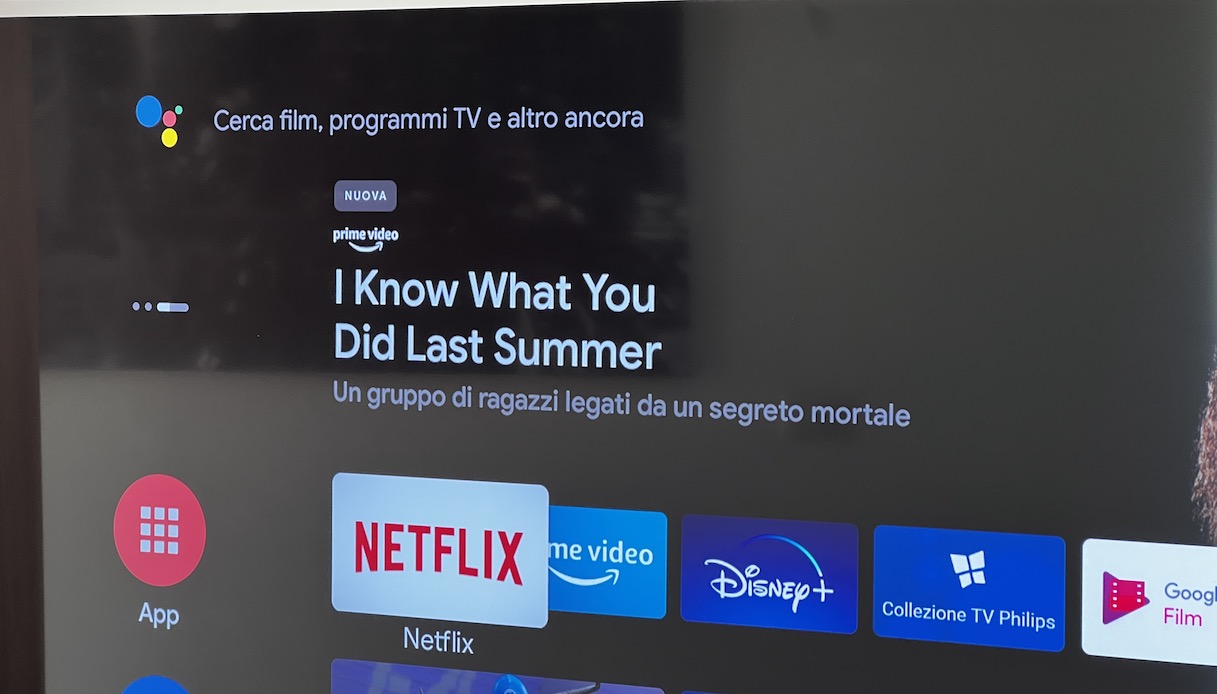The transition to the new TV broadcasting standard called DVBT2, which exploits new technologies and for this reason does not fit old TV sets, has started some time ago, that's why today more than ever it is essential to know how to choose your new TV, buying a future-proof one.
There are no risks about compatibility with the new broadcasting standard, because already since 2017 it is mandatory to sell TV sets supporting the DVBT2 standard.
Le tappe della rivoluzione TV
Proprio in questo periodo è cominciata la prima operazione che prevede il passaggio ad un nuovo tipo di compressione, con una migliore efficienza nella gestione dei dati: per questo motivo nelle diverse regioni italiane, con tempistiche che cambiano a seconda dei territori, gli operatori televisivi stanno avviando le trasmissioni in MPEG 4, con una qualità video superiore e una definizione FullHD.
Questa è solo la prima fase della transizione che entro il 2023 ci porterà ad avere in tutta Italia tutti i canali televisivi trasmessi con la codifica digitale chiamata DVBT2. L’obiettivo è quello di avere una tecnologia più efficiente, che permetta di trasportare più canali con qualità superiore in meno spazio, ovvero meno frequenze.
La presunta rivoluzione in atto è un presupposto fondamentale anche per lo sviluppo delle reti 5G, perché in questa operazione saranno liberate alcune frequenze che verranno assegnate agli operatori telefonici. Sono quelle che sfruttano una banda intorno ai 700 mhz: questo dato potrebbe non dire molto a chi non lavora in questo segmento, ma si traduce nel fatto che questi segnali sono in grado di attraversare più facilmente gli ostacoli come i muri e quindi rendono le trasmissioni delle reti cellulari molto più efficienti.
 Fonte foto: MisterGadget.Tech
Fonte foto: MisterGadget.Tech
Non solo canali TV
Secondo molti osservatori, noi siamo tra quelli, il passaggio al nuovo standard televisivo coinciderà anche con un’evoluzione dell’utilizzo del televisore dentro casa, con un’adozione sempre più massiccia di servizi in streaming e in generale della fruizione di contenuti che arrivano attraverso Internet e non attraverso l’antenna.
Proprio questa è la ragione per cui la scelta del nuovo televisore va fatta in modo accurato, tenendo conto di molti aspetti che vanno oltre la semplice estetica e la definizione dello schermo. Andando verso un’era in cui useremo sempre di più la televisione sfruttando servizi in arrivo da Internet, ciò che diventa fondamentale è il sistema operativo che troviamo all’interno della nostra TV.
Bisogna immaginare il televisore come un centro multimediale molto potente e non solo come un sistema per la ricezione dei canali terrestri: per questo dobbiamo cominciare a pensare che gli aggiornamenti futuri e la possibilità di installare anche le nuove applicazioni che verranno create diventano due parametri importantissimi.
 Fonte foto: MisterGadget.Tech
Fonte foto: MisterGadget.Tech
Il sistema operativo fa la differenza
Sul mercato ci sono moltissimi televisori con costi molto contenuti che offrono però una sezione smart che non si può espandere, perché non sarà possibile domani installare nuove applicazioni che verranno lanciate sul mercato. Questo tipo di apparati purtroppo è destinato a penalizzare chi deciderà di comprarli: ci sono centinaia di migliaia di persone che oggi non possono vedere Disney+ perché sul loro televisore non c’è l’applicazione, né si prevede che verrà aggiunta.
This is just one of the many examples we could give: while it is true that today there are accessories to connect to the TV such as Google Chromecast with Google TV, rather than Amazon Fire Stick TV, it is also true that this is not the most convenient solution.
When buying a new TV, today it is essential to know what operating system it contains: Samsung has a discreet solution with its Tizen, Hisense offers a platform called Vidaa, but the absolute best solutions are those of LG with its webOS software and those of the TVs that contain the Android TV operating system.
Now the processor counts too
It may seem hard to believe, but another particularly important detail today is the processor, because TVs must be able to encode very heavy images, with streams whose management is not easy, so as in computers and smartphones, now the processor also plays a key role in TVs.
In some cases it has to carry out a process called "Upscaling": that is, adapting images of lower definition to the quality of the screen, an operation that requires very important calculations and that must be done very quickly. In other cases, however, images must be processed to reproduce them perfectly according to the HDR10+ and Dolby Vision standards.
The dilemma between 8K and 4K and on the type of screen
The parameters to be considered are many, even on the screen quality front, because on the one hand there is the issue of definition, today televisions are all 4K, models with an 8K definition are beginning to increase significantly.
In reality, today and for many more years 4K will be a more than sufficient standard, while you have to pay some attention to the type of screen you buy, because there are huge differences between OLED, LED, MiniLED and possibly those of Samsung, with QLED standard.
Our preferred option remains that of an OLED TV, but you can also find great quality products among the products called Nanocell. That's not to say that other TV standards aren't up to snuff, but they certainly have a slightly lower level of quality than the absolute best.
The problem of product availability
Understanding how to choose your TV without making mistakes, to buy a product that will last, isn't super easy. While it is true that it takes time to make an accurate assessment, we must be careful not to let too much time pass before buying, because with the very high demand in the coming months and the low availability of processors that manufacturers have to deal with, there is a very high risk of having to make do with what remains.
The transition to the new TV standard will end in 2023, but the choice of the new smart TV should be made today, to avoid spending months deciding what to buy and then not finding your favorite product in the electronics chains.
